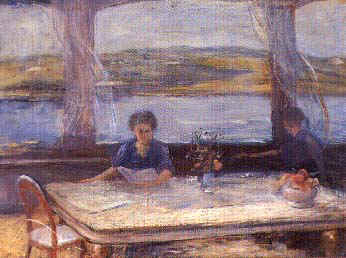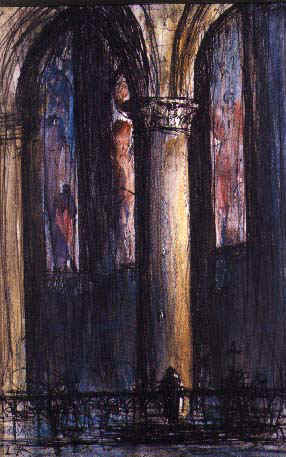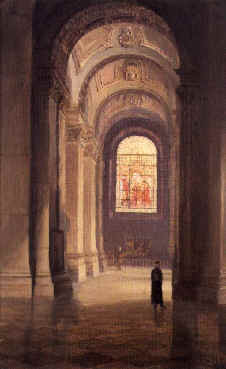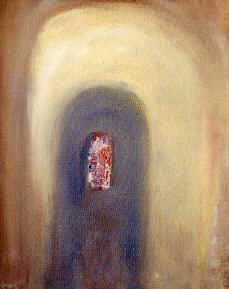|
||||||||||||
| Written by Sue Smith for the Rockhampton Art Gallery. (The images on this page are intentionally low resolution to assist faster browsing times). For schools unable to view the touring exhibition, the book in conjunction with the tour is available through the Gallery. This page has sponsored by Grafico Arts as a community service for schools. | ||||||||||||
| LLOYD
REES: COMING HOME A ROCKHAMPTON ART GALLERY TRAVELLING EXHIBITION From Rockhampton, Central Queensland, Australia Secondary school students and teachers are invited to use this brochure as part of their visit to the exhibition Lloyd Rees: coming home. It explores some themes and artworks from the exhibition to stimulate thinking and discussion about the artist’s intentions and some of the techniques he has used. Students may also want to try out in their own art some of the ideas explored in the brochure. Some activities have been suggested, but please feel free to devise your own. THE SELF
PORTRAIT Using a mirror or a photograph, produce a self-portrait that shows a particular mood or emotion. Think about the kind of line and colours that would help show your mood. Would you use the same ones to show sadness as you would for happiness? |
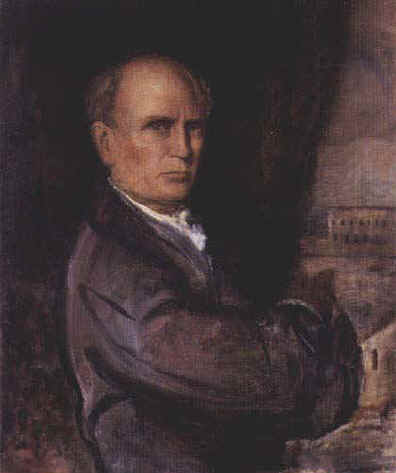 1 Self-portrait (with building) c.1950 oil on canvas 79.5 x 65.5 cm
|
|||||||||||
|
Activities Go outside and make drawings or paintings of your own special place. It might be your backyard, open countryside, a park or the beach. Choose a view where you look into the distance. Think about space, and notice how things in the foreground (the area closest to you) seem larger and more detailed. Notice how things in the background (the area furthest away from you) look paler -- sometimes even blue -- and how difficult it is to see details of things far away. Try depicting the same landscape at different times of the day, under different weather conditions, or to suggest particular moods or feelings. |
PAINTING
NATURE: SPECIAL PLACES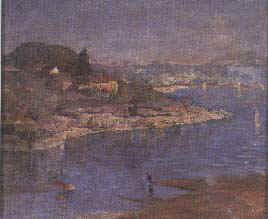
2 Headland, Lane Cover River 1939
|
|||||||||||
|
Activities What do you think Rees is saying about Chartres Cathedral in this picture? What are your reasons for thinking this? Look at how he uses scale, line, light and shade and colour to communicate his feelings. Try making a drawing of people inside a big building -- perhaps a church, your school assembly hall, a shopping mall or a sports stadium. Are the people happy, sad, contemplative or bored? Use line, colour, light and shade to show how the people in your drawing are feeling. Create your own stained-glass window using coloured cellophane and black paper. |
STUDYING
ARCHITECTURE: CATHEDRAL PICTURES
|
|||||||||||
|
Activities Look at these two cathedral paintings by Lloyd Rees, which were painted sixty years apart. Make a list of all the similarities and differences between the two paintings. Look at Rees’s brushwork, his use of colour and line and composition. In what ways have the artist’s interests and his style changed (or remained the same) over time? Imagine that you are an art critic writing for a newspaper. As you walk around the exhibition, take notes about the works that you find similar, different, striking or uninteresting. Notice the style and subject matter of each work and when it was created. Then look again at the exhibition over all, and choose three or four works that you think are the best -- and the weakest -- in the exhibition and write down why you have chosen them. At school, write a short review of the exhibition. Talk about how Lloyd Rees’s art has changed from the earliest work (1915) to the latest (1988), and say what you think are the strengths and weaknesses of his work. Give your own opinions, and try to give convincing reasons for your judgments. |
TIME
AND THE INDIVIDUAL
|
|||||||||||

